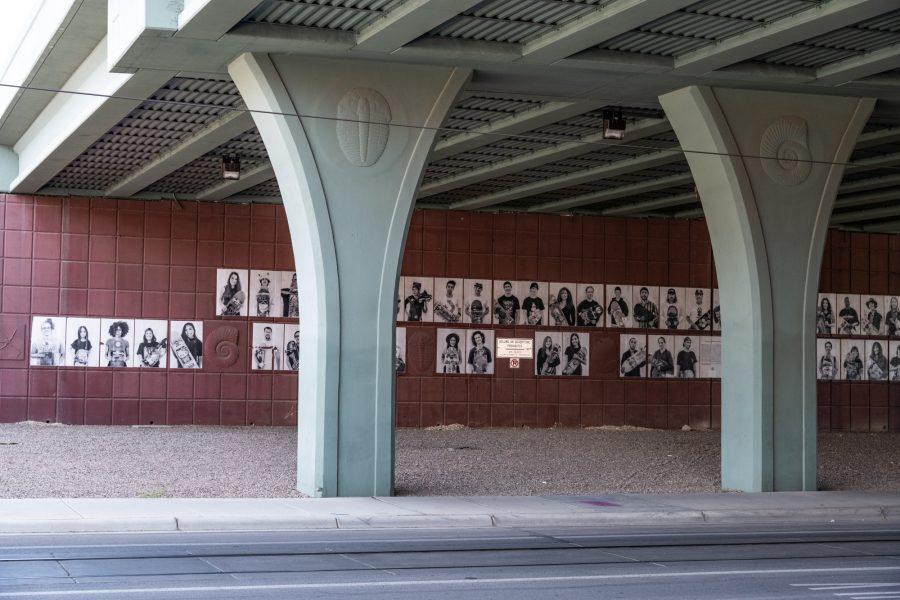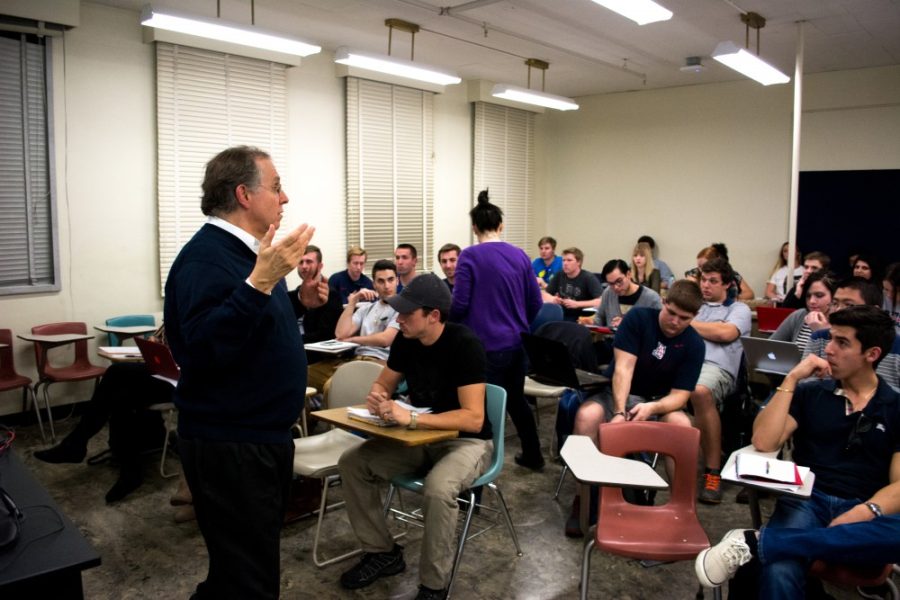The University of Arizona campus is filled with anti-skateboarding architecture. Students cannot walk throughout any part of the campus without seeing the small L-shaped brackets on benches, curbs or any other grind-able structure.
Most of Tucson is not skater-friendly, from the few skate parks to the old, cracked and pothole-filled roads. Tucson is a city of over half a million people with a growing skate scene that has grown exponentially, yet there are hardly any places where skaters can skate.
A plan to build a skate park on Cushing Avenue in the underpass of the freeway is underway, after six years of pushing from local skaters. The city hosted an event on April 13, the second of three events that seeks out community feedback for the design of the skate park.
“The engagement is for us, probably 90% [of the process],” said Lara Hamwey, the project manager and director of Tucson Parks and Recreation. “It’s the biggest tool and then having the right companies to design as well.”
The Tucson Skatepark Alliance has worked with the City of Tucson to bring the plans into motion and to give community feedback along the way.
The Skatepark Alliance is a community-driven organization that advocates for the development of skate parks in Tucson and the enrichment of the lives of the Tucson skateboarding community, according to their website.
“There really aren’t enough places to skate but there’s an overwhelming [amount of] skaters,” said Chris Atkins, the owner of Mortal Skate Shop and co-chair of the Tucson Skatepark Alliance.
Erik Williams, also co-chair of the skate park alliance, points to smaller cities like Safford which has a small population of about 9,000 people yet already has three skate parks, about the number of major skate parks that Tucson has.
Cushing Street Skatepark
The future Cushing Street Skatepark falls along the same Sun Link route that travels down Second Street and University Boulevard, down to Fourth Avenue and through downtown Tucson which will make it accessible for students through a direct drop-off.
The concept plan involves transition, flow and street skating styles with plenty of creative designs such as a cactus and the Arizona flag painted onto parts of the park.
“[Skaters] want to make sure that the way that the different features or designs fit how they want to skate,” Hamwey said. “We needed a [construction] firm that would understand what the best practices are, what’s the newest trends, and then also, the fact that skating has gone from the traditional focus of bowls to what is now called street and more linear.”
An additional feature that makes it unique is the shade that it will provide skaters, especially during the hot summer months.
At the April 26 meeting, results from a survey the city had conducted showed that some of the most important features for people who took the survey are lights, a water fountain, restrooms and garbage cans.
Survey respondents also showed an interest in parking, shade, vending machines and security. To see the full results of the survey, visit this website.
The beginning of the Tucson Skatepark Alliance
The idea began in 2016 when Atkins and Williams proposed the skate park to the City Council. Two years later the two formed the Tucson Skatepark Alliance and began advocating for the park to be built.
The beginning of the alliance brought over 2,000 people to their meetings, however that number slowly dwindled down to 12 committed members that meet regularly to discuss the progress on the Cushing Street Skatepark.
“This project is really because of the Tucson Skatepark Alliance,” Andre Rioux, the project landscape manager, said. “They had a vision for what should happen underneath that space and they advocated for it, and have been vocal.”
In 2021, the mayor and city council approved funding for a feasibility study. In 2022, from Feb. 15 to March 6 of this year they released a survey asking for feedback from the public and received 771 responses.
“The only way that you can deliver a successful design is that you make sure that you’ve got consensus in your approach,” Rioux said. “That’s why the engagement and the participation of the survey is so critical. We can design in a vacuum with no input, but the chances of somebody actually wanting to use that part, and being successful is very minimal.”
The project has partial funding, $500,000 from the city and what the skate park alliance has raised for the project, but some of those funds have been used for the design process. People can donate at the Tucson Delivers website.
“Cushing is only the beginning,” Atkins said. “We have projects we’re working with Parks and [Recreation], building micro spots all around Tucson [and] operable bike maps, so kids can ride their bikes in different parts of the skate.”
What happens next
There will be one more public meeting where they will take the feedback from the April 13 event and create a final concept. The next step after that is having a cost estimation and a final design which must be approved by the mayor and city council.
By the summer, the first phase of the feasibility study will be completed and they will be able to move to phase two: the design and construction of the skate park.
“Conceivably, you could be looking at 18 months,” Hamwey said. “But it’s evident that it takes money to get to construction. Once you have the design set, to do the construction only takes a couple of months.”
Follow Susan Barnett on Twitter









